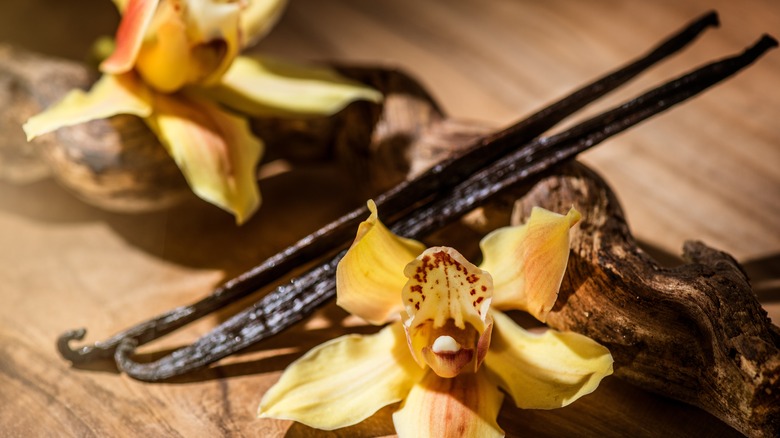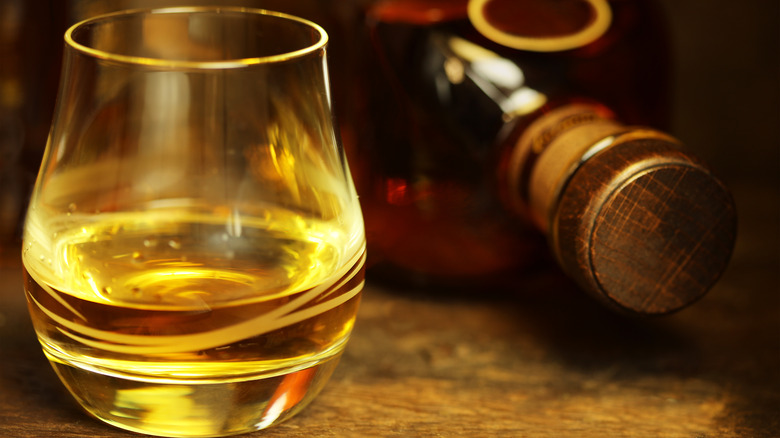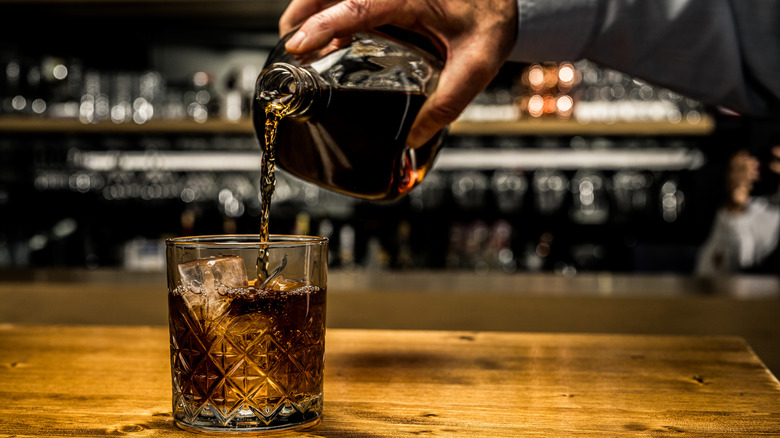To Level Up Mediocre Whiskey, Add Vanilla Beans To The Bottle
For those new to drinking whiskey, a cheap bottle of Jim Beam may taste exactly the same as a $65 Glenfiddich 12-year-old single malt. But for the people who have mastered their whiskey palate, a mediocre dram can be pretty depressing to taste neat without the option of turning it into a cocktail. Don't pour it down the drain just yet, though. Keep that inexpensive whiskey in hand and add vanilla beans to the bottle: We promise it will turn out a lot easier on the tongue!
When sipping any kind of whiskey, vanilla is one of the most common notes tasters describe across a wide range of bottlings. Whether it's Speyside-borne peated whiskey or a true Kentucky bourbon, the sweet spice of vanilla almost has a ubiquitous presence in the tasting profiles of all good whiskeys. So, when a bottle tastes too watery or is just lacking in the flavor department overall, you can infuse your own vanilla directly into the bottle. That way it will taste better if you'd like to drink it neat instead of spinning it into something like a New York Sour.
Why vanilla is such a common tasting note in whiskey
Vanilla is a quintessential tasting note in whiskey primarily due to the complex interplay between the spirit and its maturation process in oak barrels. The vanilla aroma is attributed to vanillin, a compound derived from the lignin component of oak wood. As whiskey spends time in these barrels, it interacts with the wood, coaxing out the vanillin and infusing the whiskey with the characteristic sweet vanilla aroma that we all know and love.
What's more, the alcohol in whiskey makes our taste buds more sensitive to vanillin, meaning your palate will be even more sensitive to the presence of vanillin than in any non-alcoholic drink. This combination of factors — the oak barrels, the charring process, and the alcohol — all contribute to making vanilla such a standout flavor in many whiskeys.
However, when we're talking about cheap iterations that haven't been aged for long (or were just never aged properly,) there isn't going to be a lot of fragrant vanillin contained within. The result? A whiskey that might taste harsh and smell more like rubbing alcohol than a nuanced, well-aged spirit.
Infusing vanilla beans with mediocre whiskey
You only need two things: the bottle of whiskey, plus the best vanilla bean pods you can find. For every 8 ounces of whiskey, you'll want to use between one to two vanilla pods. This means for a standard 750 milliliter (25.36 ounces) bottle, three to six pods should suffice. The exact number depends on your preference for vanilla intensity and the quality of the whiskey; a harsher whiskey might benefit from more vanilla to smooth out the flavors.
Once you've gotten the pods, take a knife and split them lengthwise to expose their fragrant interior. Then drop the split pods one by one into the bottle and close the cap. That's about it! Keep the bottle in a cool and dry place for a week or two, and give it a whiff or a taste every couple of days to see how well the infusion is progressing.
Once you're satisfied with the result, you can fish out the vanilla bean pods with a pair of chopsticks. Alternatively, you can strain the infused whiskey through a cheesecloth while transferring it into a new clean bottle. Keep in mind, though, that you don't necessarily have to remove the vanilla pods. They can stay inside the bottle as a permanent fixture — after all, the cheap whiskey really can't taste any worse than how it started!


